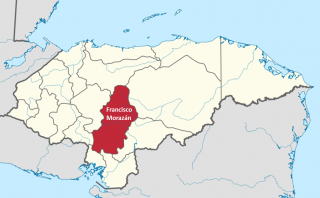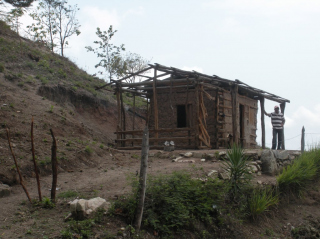Pajarillos, Honduras
![]()
![]()
![]()
![]()
![]()
![]()
![]() Click on Programs to learn more about their work in this community
Click on Programs to learn more about their work in this community
General Information

| Population* | 1027 |
| Number of homes | 180 |
| Avg # of people per home | 4.5 |
| Primary Occupations |
Agriculture, Sugar Factory |
| Water System | Yes |
| Community Bank | Yes |
| % of Homes with Latrines | 80% |
| Electricity | No |
| Corresponding Health Center | CESAMO Cantarranas ~ 2 Hours walking |
| Common Illnesses | Flu and Cough, Diarrhea, Respiratory Problems, Eyes/Nose/Throat/Ears |
| School Access & Distance | 1st-9th grade, Located in Community Center |
| Municipality | Cantarranas |
| Department | Francisco Morazán |
| GPS |
N 14° 16.948’ W 087° 04.884’ |
| Corresponding Health Center | CESAMO-San Juan de Flores |
| Distance from compounds | 1 hour 45 minutes |
* Population does not reflect how many patients will be seen on medical
brigades as many people from surrounding communities come seeking
Medical Brigades medical attention.
Top Needs Expressed
The top needs expressed by the key community members are sources of employment, an expanded education system that includes kindergarten, a reliable infrastructure such as roads, and a health center because the one that serves Pajarillos is located very far away.
Pajarillos’ educational system includes Kinder and Primary schools (until 6th grade), but all classes are offered in the same one-room building. There are about 65 students and Nelda Dora Nuñez is the school director.
Pajarillos has a water system that was constructed by Global Brigades in Spring 2010. Water arrives every day and the Water Council is in the process of being trained and ready to start chlorinating water.1 Almost 100% of homes in the community are connected to the system though there is one small neighboring village that is not connected. There is a Water Council made up of 7 members.
Pajarillos does not have a health center in the community. The nearest health center is in San Juan de Flores, about a 2-hour walking distance. Dental care is not available in the community, though it is available at the health center in San Juan de Flores. There is a basic sanitation committee made up of 11 members, trained by Global Brigades.
The most common illnesses seen by community members are respiratory infections, Chagas, and the flu. Pajarillos was found to have 8 of the 13 Chagas positive cases in the region of San Juan de Flores when tests were administered to kids under 15 years old in September 2009. Almost 100% of the community is estimated to have latrines that currently function, though a small nearby village, Plan Fresco, does not have several functioning. 35% has eco-stoves (estufas justas). Also about 35% is estimated to have cement floors.
Though there is no health center data available at the community level for Pajarillos, below are some health statistics from CESAMO-San Juan de Flores2 which serves Pajarillos:
I. Annual Morbidities, 2009: CESAMO-San Juan de Flores
|
Rank |
Morbidity |
Number of Cases / % of all cases seen (2009 |
|
1 |
Other Causes |
739 / 20.1% |
|
2 |
Hypertension |
539 / 14.8% |
|
3 |
Pharyngotonsillitis |
427 / 11.7% |
|
4 |
Common Cold |
385 / 10.6% |
|
5 |
Intestinal Parasites |
272 / 7.5% |
|
6 |
Urinary Infections |
190 / 5.2% |
|
7 |
Asthma |
93 / 2.6% |
|
8 |
Diarrhea/Dysentery |
88 / 2.4% |
|
9 |
Skin Infections |
81 / 2.2% |
|
10 |
Anemia |
72 / 2.0% |
Centro de Salud Statistics, Centro de Salud Regional-Francisco Morazán, 16 Marzo 2010
II. Caserios (small villages) served by CESAMO-San Juan de Flores, 2009
|
Caserios |
Population |
Number of Homes |
Potable Water (%) |
Latrines (%) |
Malnourished Children (<5yrs) |
Births/ % Coverage of Pregnancies |
Order of Priority (based on HC standards) |
|
SAN JUAN DE FLORES |
2736 |
1000 |
100 |
100 |
|
57/44% |
NA |
|
Naranjal* |
820 |
146 |
100 |
100 |
NA |
9/69% |
6 |
|
Ingenio |
130 |
20 |
90 |
90 |
NA |
3/75% |
8 |
|
Sabaneta* |
400 |
66 |
100 |
100 |
NA |
4/100% |
4 |
|
Pajarillo* |
700 |
117 |
100 |
95 |
NA |
11/39% |
1 |
|
Hatillo |
75 |
37 |
95 |
95 |
NA |
5/71% |
7 |
|
Chandala |
470 |
120 |
100 |
100 |
NA |
4/31% |
5 |
|
Cerro Bonito |
72 |
475 |
100 |
100 |
NA |
7/100% |
5 |
|
Carbón |
89 |
371 |
100 |
95 |
NA |
5/100% |
4 |
|
San Jose Ramos |
376 |
100 |
100 |
100 |
NA |
4/80% |
4 |
|
Oeste |
290 |
55 |
20 |
90 |
NA |
3/60% |
2 |
|
Trujillito |
60 |
20 |
100 |
90 |
NA |
1/33% |
3 |
|
Pesayas |
50 |
380 |
100 |
100 |
NA |
2/67% |
4 |
|
Bosque |
221 |
60 |
100 |
100 |
NA |
2/67% |
4 |
|
Sicaguara |
40 |
10 |
100 |
96 |
NA |
1/50% |
4 |
|
Suyapa |
80 |
407 |
100 |
100 |
NA |
6/60% |
5 |
|
Jicarito |
80 |
300 |
100 |
100 |
NA |
6/60% |
4 |
|
Bartolo |
35 |
210 |
95 |
95 |
NA |
2/33% |
4 |
Centro de Salud Statistics, Centro de Salud Regional-Francisco Morazán, 14 Marzo 2010
*Global Brigades also works in these communities with medical brigades.
(NA)= Not available data
The average family income per month is estimated to be 2000 Lempiras, which is approximately L400 (US $21.18) per person3. The majority of homes are made of adobe. The main form of employment is agriculture on owned land, and the main products that are cultivated in the community are corn and beans. Members of Pajarillos have access to credit through a community bank, trained by FUNDER with the support of Global Brigades. The bank is called “Producción en Marcha” (Production in March) and Juan Pinera is the president.
Pajarillos is not currently receiving medical brigades from any other organization than Global Brigades, though the Baptist Church did work here a few years ago. Global Brigades has had a strong presence in Pajarillos over the last 2 years. In 2009, Public Health Brigades completed latrine, eco-stove, pila, and concrete foor projects. Recently in 2010, they completed the water project with GB’s Water Brigades and formed a community bank through GB’s microfinance program. JICA also has worked in Pajarillos in Chagas prevention with activities like disease prevention education, Chagas testing, and fumigations.
Pajarillos has been working with Global Brigades in medical, 
water, public health, and microfinance projects and brigades since 2008. GB has built a strong relationship with this community in the last 2 years, and during this process, Pajarillos has taken great leaps in strengthening its community leaders and local organizations.
|
Education |
11th |
|
Water |
91st |
|
Health |
50th |
|
Socio-economics |
56th |
|
Collaboration |
22nd |
|
Overall |
62nd |
Total communities evaluated: 97
Source of information: Community Leaders Interview, Centro de Salud statistics
Date of interview: 20 May 2010
1The accepted regulation frequency for chlorinating water is every 4 days.
2CESAMO and CESAR are terms used for types of health centers. CESAMOs are larger, more comprehensive facilities that usually have a physician on staff at all times and occasionally a dentist. CESARs are more remote, less equipped facilities, usually with 1-2 nurses on staff.
3According to Red Solidaria and World Food Programme in Honduras, the average family is approximated at 5 people per household, the poverty line is L930 (US$49.23) per person per month, and the extreme poverty line is L617 (US$32.66) per person per month.